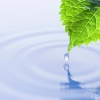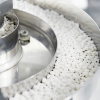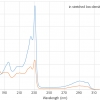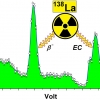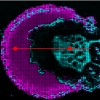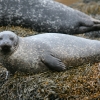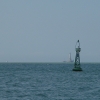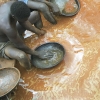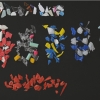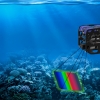With a wide range of concentrations of elements in potable waters, their accurate determination is difficult with ICP-MS. It is possible, using a cell-based instrument, to “tune” the signal sensitivity of particular elements and so keep all them within the dynamic range of the instrument.
Spectroscopy Articles
Pages
The ICH Harmonised Guideline for Elemental Impurities of drug products specifies limits on the residual amounts of 24 elements whose toxicities are of concern. The recommended analytical techniques to achieve this are ICP-MS and ICP-AES, but the regulations allow other methods if they exist. One such method is XRF spectrometry. The method is shown to meet the regulations and is a useful, cost-effective alternative to ICP-MS and ICP-AES.
This work demonstrates the determination of inorganic anions in drinking water by ion chromatography.
The UV/Vis+ Photochemistry Database is a collection of photochemical data and information was started in 1999 and is now an online database updated weekly.
It is difficult to provide practical experience with gamma spectroscopy in undergraduate laboratories, and the authors have been investigating alternative sources, and the 138La isotope is a suitable candidate. As well as some background on gamma spectroscopy and radiochemistry, Marco and Valentina also provide some sample exercises that could be used for undergraduate practicals.
David is concerned about the “Importance of citing full details of spectral library and search program” in papers. As he points out, “even when the same mass spectrum is searched against two different versions of the NIST/EPA/NIH EI Mass Spectral Library using the same search program, two different compounds can be found as the first Hit”. There are many possible reasons for this, but the version of the spectral library used and the particular search program used make a difference, and should be included in all references.
A sponsored article demonstrating the ability of the Thermo Scientific™ iCAP™ PRO Series inductively coupled plasma optical emission spectroscopy instrument to determine trace elements and major components in foodstuffs to comply with regulations.
This article describes a recently introduced, rapid, laser-based hyperspectral method for thin-film analysis in the mid-IR fingerprint range.
FT-IR spectroscopy and ED-XRF are used to determine the origin of contaminants in food that may, or may not, have originated from dental materials.
The latest edition of the European Pharmacopoeia on ultraviolet and visible spectroscopy has become mandatory as of 1 January 2020, so those of you who need to comply with its requirements will find this of particular interest. Nathan and John pick apart the significant changes with a view to their practical application for instrument users. Cells, control of equipment performance, wavelength accuracy, absorbance accuracy, photometric linearity, stray light and resolution, system suitability and reference materials are all covered.
The authors have developed a clever solution to be able to provide constant resolution, high-resolution mass spectrometry data across the full spectrum. In doing so, they have assigned 244,779 unique elemental compositions: a record.
This article reports on work using NIR spectroscopy to investigate the physiology of seals during diving. As well as the versatility of NIR spectroscopy, the technical achievements involved in placing a spectrometer on a seal without harming it and recording data underwater are amazing.
Estuaries are where much of our marine pollution is to be found, being the gateway between the land and the ocean. They are also where much of our seafood comes. So, knowledge of elemental contamination in estuaries is vital to protect us from the ingestion of polluted seafood.
Rechargeable lithium ion batteries (LIBs) have a significant role in modern society: from portable electronic devices to electric cars and bicycles. Indeed, I would be surprised if anyone reading this does not have a LIB on or near them now. Both NMR and EPR spectroscopies and their imaging modalities can provide useful information, which will prove important in battery research and the development of ever improving batteries.
The authors describe work they are doing to develop a green methodology to determine soil organic matter. If the World’s population is to be fed in the future, improvements to agricultural productivity are required and soil fertility will be key to this. Current methodologies are time-consuming and expensive, but visible-near infrared spectroscopy has the potential to replace them.
Burned bones are often found in archaeological sites as a result of fire or funerary practices and are often the only preserved human remains. Using inelastic neutron scattering, infrared and micro-Raman spectroscopies, the authors can reach definitive conclusions as to the temperature at which the bone was burned. This enables archaeologists and anthropologists to learn more about how ancient civilisations used fire for funerary, burial or cooking purposes.
There are now a huge number of small-scale gold miners who scratch a living (literally) from poor-quality gold deposits. One essential step in the process to produce the end product, pure gold, uses mercury to capture the gold mixed in with rock and other minerals. The quantity of mercury released annually by small-scale gold miners alone is estimated to be 3000 tons—37 % of global mercury pollution! Whilst this causes local pollution, much of the mercury ends up being distributed around the world as droplets in “mercury flour”. This enters the water supply and hence the food chain of us and other animals. Amongst all the bad news, there is a glint of good news. Chemistry can come to the rescue and can help recover the mercury left behind by the process, and, because gold itself is a by-product, the process could be self-funding.
An interesting insight into, well, a week in the life of the author as a fourth-year PhD student. Katie is working on investigating a way of detecting liver damage using spectroscopy, which is “about as interdisciplinary as you can get”! I’m sure all readers will find it interesting and it may be helpful for those you know who may be considering a PhD.
The authors look at two important areas of recycling of waste materials: concrete and plastics. If aggregates are to be recycled from concrete, the presence of pollutants (plastics, foams, brick etc.) and the degree of removal of cement mortar from the aggregates must be assessed and monitored. NIR hyperspectral imaging with PLS does a good job of both tasks.
Coral reefs have been used as examples of climate change in action for decades, since the “bleaching” caused by corals stressed by heat expelling their symbiotic photosynthesising algae is such a dramatic effect. Jonathan Teague, Jack Willans, Michael Allen, Thomas Scott and John Day describe their work in developing a hyperspectral imaging system that can be deployed on a submersible remotely operated vehicle to monitor coral health through changes in their natural fluorescence

